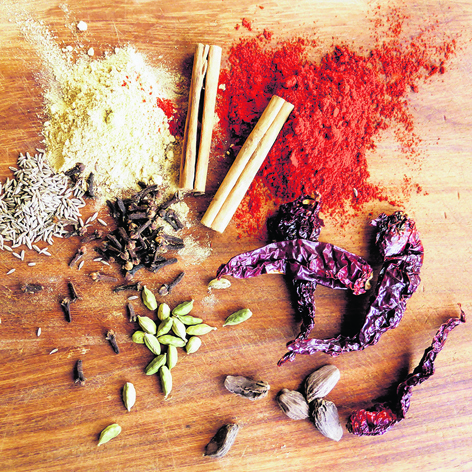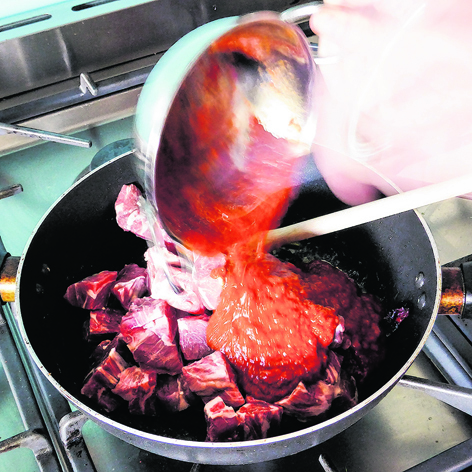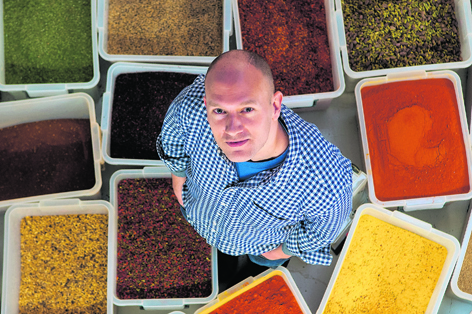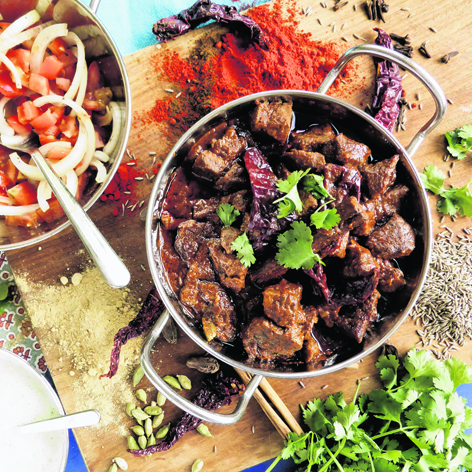Having the right ingredients is what will turn your cooking from ordinary to amazing, writes James Ransome, The Spicery’s in-house chef
The British curry-house favourite Rogan Josh has a fascinating history that includes influences from across the ancient spice routes of Asia. It is now known as one of the national dishes of Kashmir, where it was first introduced by the Moghuls, who were themselves strongly influenced by Persian traditions and culture. The complex origin has led to some rarely seen spice combinations, but with a comforting, aromatic and entirely delicious result.
 Despite the numerous spices used in Rogan Josh, it noticeably lacks the intense heat that characterises many Indian curries. This makes it a perfect dish for people who enjoy exploring new tastes, but shy away from hot foods. The relative mildness comes from the use of Kashmiri chillies, which are only moderately spicy and prized for their fantastic depth of flavour and rich, red colour.
Despite the numerous spices used in Rogan Josh, it noticeably lacks the intense heat that characterises many Indian curries. This makes it a perfect dish for people who enjoy exploring new tastes, but shy away from hot foods. The relative mildness comes from the use of Kashmiri chillies, which are only moderately spicy and prized for their fantastic depth of flavour and rich, red colour.
There is some debate about whether authentic Rogan Josh should contain tomatoes or not. Kashmiris traditionally cook meat and tomatoes together when both ingredients are available, but some purists insist tomatoes were absent from the original version until it began appearing on British menus. This version, which I developed in The Spicery’s test kitchen, is designed more for maximum flavour rather than absolute authenticity. For this reason we’ve included tomato paste – and a bit of paprika as well!
ROGAN JOSH
Onion paste
2tbsp of tomato puree
1tsp salt
1tbsp of oil
25g of butter
WHOLE SPICES
4 Kashmiri chillies
1 cinnamon quill
4 cloves
4 green cardamon seeds
2 black cardamon seeds
GROUND SPICES
1tbsp Kashmiri chilli powder
1tsp sweet paprika
1/2tsp ground ginger
1/2tsp garlic powder
1/4tsp ground cloves
1/4tsp ground green cardamon seeds
1/4tsp ground cinnamon
1/4tsp ground cumin
Like most curries, Rogan Josh is relatively easy to prepare once you’ve assembled and prepared the ingredients. Having the right ingredients is what will turn your cooking from ordinary to amazing, though. Our company stocks over 150 individual spices (and counting), and we test and retest each recipe with different spices in different amounts until we get it exactly right. I strongly recommend making the effort to get the exact spices described below, but just in case you struggle to find any, I’ve provided substitutions for the harder to find ingredients.
I also strongly recommend freshly grinding spices yourself if at all possible. This will bring new depths of flavour to your cooking, especially if you’ve kept substitutions to a minimum, that you can’t replicate with the powders and pre-mixed sauces available in supermarkets.
The first of the more unusual spices are the Kashmiri chilies mentioned above, which I’ve included both as a powder and a whole spice. If you are unable to find any, try mixing four parts paprika and one part cayenne pepper for the powder, and a fresh red chilli with the seeds and veins removed for the whole spice.
You also may not have encountered black cardamon before. It is used less commonly than the more familiar green and is not really a true cardamon at all, but a large blackish-coloured pod with seeds and a recognisably cardamon aroma. It is rather more pungent than its green friend, and enjoys a smoky character derived from the method of drying used after harvesting. If you can’t locate any in your area stick to just green cardamon in this recipe.
Once everything is assembled, blend together the roughly chopped onion, the Kashmiri chilli powder, sweet paprika, ground ginger, tomato paste, ground green cardamon seeds, cumin, and salt into a smooth puree (adding a splash of water if it gets too thick).
This dense and pungent paste really packs a punch and will smell incredible once it’s cooking. The cumin is delicately spicy and slightly sweet, the cinnamon warm and earthy, the garlic deeply savoury and satisfying, the green cardamon, fresh and aromatic, and the cloves are pungent and instantly identifiable. As with cardamon, in India, cloves are considered as digestives or as mouth fresheners. Both have a natural astringency that is extremely refreshing and enjoyable.
Next it’s time to sweat the whole spices. Gently fry the whole Kashmiri chillies, cinnamon quill, green and black cardamon seeds, and whole cloves in 1tbsp of oil and 25g of butter for 30 seconds. Be careful to warm these ingredients gently because even slightly burnt spices quickly become acrid and unpleasant.
The pungent smell of the cinnamon may make your kitchen smell a bit Christmassy, but it is here to add warmth and a slightly sweet depth to the dish. When you add the cloves, again there’s that lovely spicy aroma as the cloves add their subtle warmth, but also a complex, slightly resinous note. The green cardamons have a beautiful, fresh scent to them and they also add visual texture and another layer of flavour: there’s a suggestion of lemon, a tang of pine, and a slight touch of menthol. The smokiness of the black cardamon makes this blend of flavours complete.
 Add the spice paste and the lamb to the pan and cook for 15 minutes until all the liquid has evaporated and the paste is beginning to brown and stick to the bottom of the pan. Then add 200ml of water then cover and cook for 45 minutes until the lamb is tender and the sauce is rich and thick.
Add the spice paste and the lamb to the pan and cook for 15 minutes until all the liquid has evaporated and the paste is beginning to brown and stick to the bottom of the pan. Then add 200ml of water then cover and cook for 45 minutes until the lamb is tender and the sauce is rich and thick.
Serve with rice, naan bread, and salad.
When you prepare the dish of Rogan Josh, you will be exposed to heat, sweetness and a slight bitterness; to freshness, sweetness and pungency. It is complex, satisfying, exciting, and surprisingly easy to cook!
James Ransome is the CEO of The Spicery, the UK’s original and most successful recipe kit provider, a chef, and a well-known expert on spices and the history of spices. When he’s not trying out new recipes in his test kitchen he can often be found travelling the world looking for new ingredients and flavour combinations.

